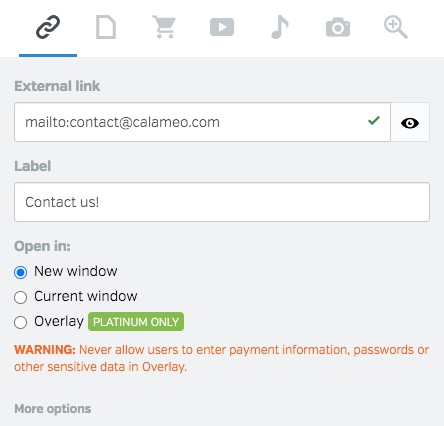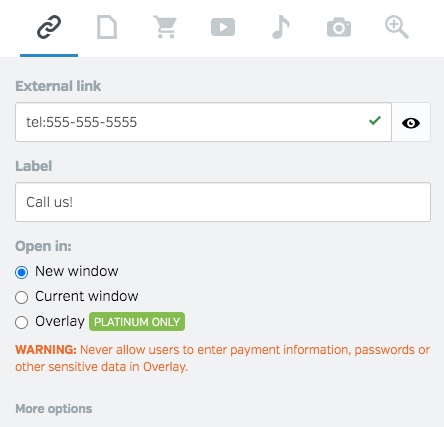If there’s one thing you need to know about ecommerce in 2020, it’s the number 4.206. Trillion. $4.206 trillion is the total volume of retail sales projected to take place online next year worldwide. That’s nearly double since just 2017 and just three years from now, ecommerce will represent one-fifth of the global retail market.
In other words, online sales are huge—and only getting more important for modern business. But the explosion of ecommerce has led to big changes in the ways that customers and companies interact. Not limited to the aisles of a store, shoppers invest significant time in learning about brands and products online before making a purchase. Connecting with customers now means standing out among the infinite options available on the internet.
Sound like a challenge? Luckily, a smart approach to online sales can bring great opportunities for your business to grow. Keep reading for three essential ecommerce trends to watch as well as our look at the best ways to adapt in 2022 and beyond.
Shopping without borders
Thanks to the internet, people all over the world are able to connect. 67% of the global population is now online and users everywhere log on to chat, share and shop. It’s easier than ever for today’s customers to discover products from faraway places and order in just a few clicks.
More important, they don’t hesitate to buy internationally. According to Shopify, 57% of online shoppers make purchases from overseas sellers. An ecommerce presence can allow businesses to access a new, global base of potential customers. But first you’ll need to analyze your audience. If you have a digital catalog, for example, who is already browsing it? Do your international visitors signal interest in your products by clicking Shopping links? Are there sales to match or is there a disconnect between your overseas audience and your customers?
The answers to these questions will help you determine where to start optimizing your ecommerce activity for international buyers. This might be as simple as providing sales and marketing content in a polished translation. Or it could involve adjusting the payment and delivery options that you offer. No matter what you do to develop global sales, don’t overlook the B2B category. Worldwide B2B online revenue has reached $10.6 trillion, compared to just $2.8 trillion for the B2C market.
Hybrid customer journeys
Although ecommerce has been growing fast, there is strong evidence that it is most effective when combined with other channels. For example, Google has found that 61% of shoppers prefer to buy from brands that have an offline retail outlet in addition to an online store. Even more mix online and offline to shop: over 80% cross between digital and physical channels as they research and purchase products. B2B research includes an online search 90% of the time and outreach often happens only once the buyer’s decision-making process is halfway finished.
Since customers who interact with a company in these different ways also spend more, maximizing your business’s assets for online and offline use is key. The online discoverability of your products should be a priority, but traditional marketing material still has serious value. While 35% of online product searches begin with Google, 82% of all shoppers have started a purchase with a catalog.
In fact, catalogs rank alongside store visits and browsing online as favorite way for people of all ages to interact with brands. Digitizing your catalog allows you to make this offline channel searchable and shoppable online. By being a part of both experiences, your catalog can meet the needs of today’s customers and become a point where ecommerce and traditional shopping intersect.
The experience factor
As shoppers spend more time deciding what to purchase, businesses are increasingly attentive to the complete customer experience. Instead of beginning when a potential buyer walks into your store, that experience now might start online with your company’s name appearing in search results. It can span online and offline research, orders and service, touching everything from reading your blog to navigating a product exchange.
Because there are so many different elements to take into account, customer experience can be difficult to manage. One area that brands are focusing improvements on is the creating a consistent experience for customers, digitally and in stores. Over half of retailers worldwide called it their top priority in 2019. The stakes are high: up to 75% of US shoppers say that customer experience matters to them when considering a purchase.
To make the most out of ecommerce, look for innovative ways to connect the online and offline experience. You can start small with a simple step, like adding your company branding to digital assets, or think bigger by optimizing how customers shop your site. There are dozens of UX changes you can test to produce a better experience for your clients—and hopefully boost your sales, too.
Add to basket
All three of these trends are well worth incorporating into your business’s digital sales strategy for 2020. Taking advantage of international shoppers, customers’ varied paths to purchase and the customer experience opportunity can help you move forward in market that is still developing fast. Trends that will shape the future of ecommerce are already starting to emerge, like omnichannel personalization and frictionless payment. Embrace the challenge of modern ecommerce and get ready to shop for the next big thing.
Read this article in our 4th issue of Calaméo Magazine, as well as many others on the theme of shopping:
And if you haven’t read all the other issues of Calaméo Magazine yet, you can find them right here.














